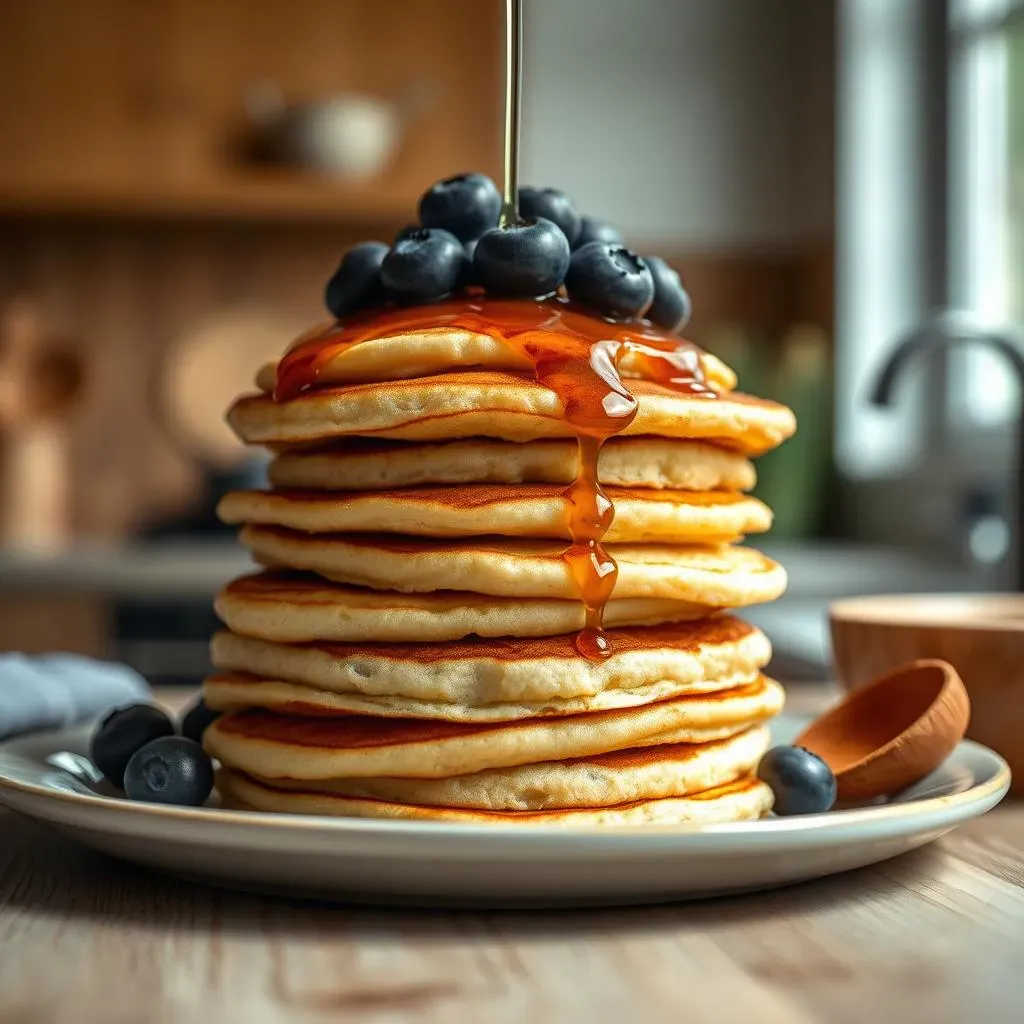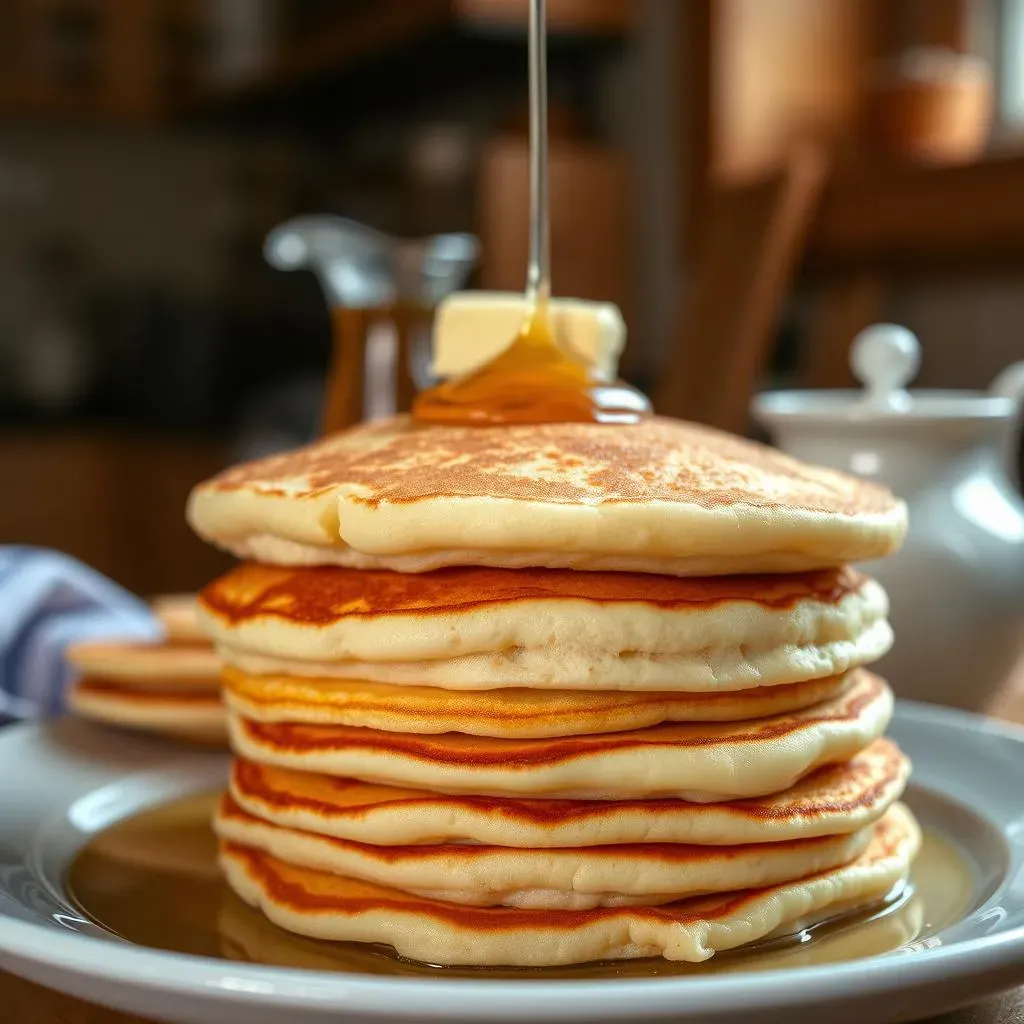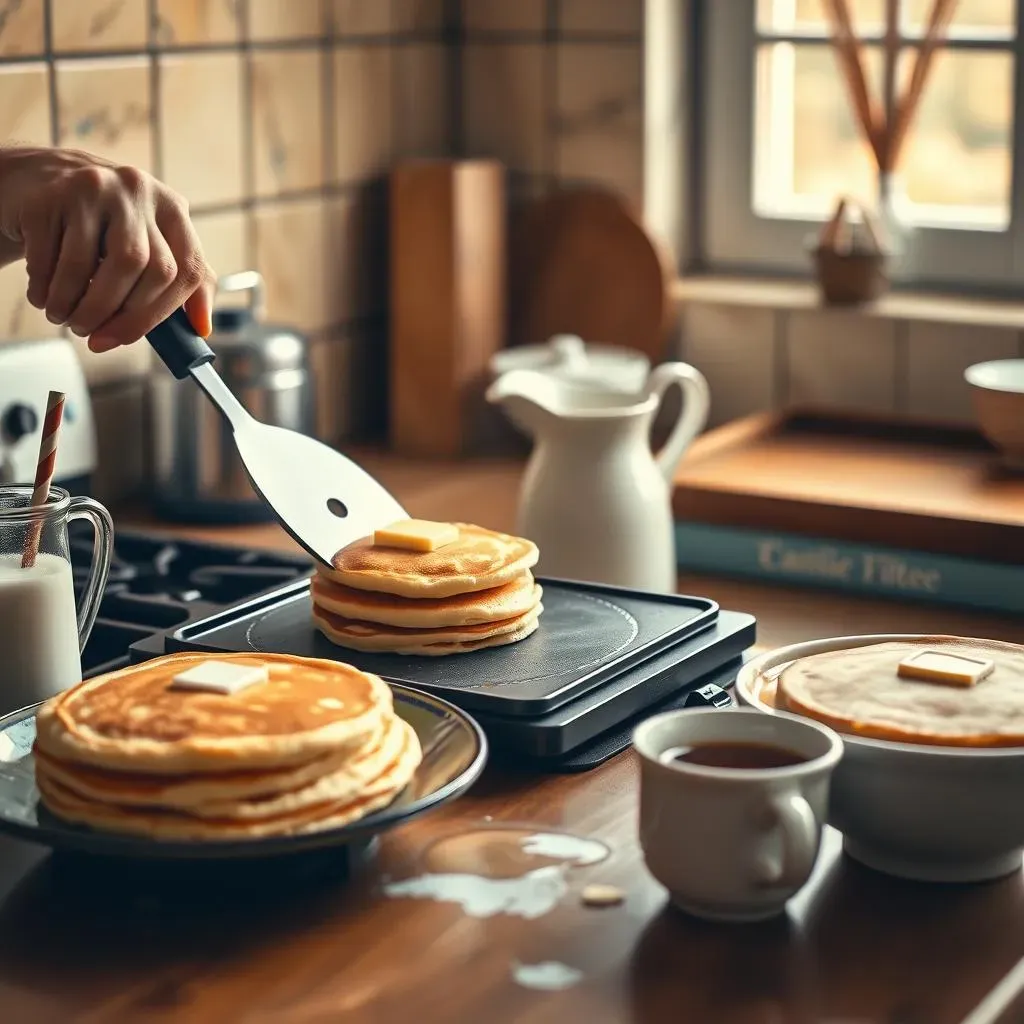Table of Contents
Ever wondered why your pancakes sometimes turn out flat and dense, while other times they're light and fluffy? The secret isn't some fancy ingredient or complicated technique. It's something surprisingly simple: letting your batter rest. Yes, you heard that right. We're talking about the crucial step that many home cooks often skip. This article will explain why the question "should pancake batter rest" isn't just a suggestion, it's a must for pancake perfection. We'll explore the science behind this seemingly minor step, revealing how a bit of waiting time can transform your breakfast. We will also dive into the ideal resting times and what to do when time is not on your side. So, grab your whisk and let's uncover the secret to making the fluffiest pancakes you've ever tasted. Get ready to elevate your pancake game from good to great!
Why Letting Pancake Batter Rest is a Game Changer

Why Letting Pancake Batter Rest is a Game Changer
The Science of Hydration
So, you've mixed your batter, and it's looking pretty good, right? Wrong! Those dry ingredients, especially the flour, are thirsty. When you mix them with the wet ingredients, they don't instantly become best friends. They need time to really soak up that liquid. This is what we call hydration. When flour hydrates properly, the gluten proteins relax. This is crucial because relaxed gluten means tender, not tough, pancakes. If you skip the rest, you're basically forcing the gluten to work overtime, resulting in a chewier, less enjoyable pancake. It's like asking someone to run a marathon without stretching first, not ideal.
Think of it like this: you wouldn't throw a bunch of dry sponges into a bucket of water and expect them to be fully saturated in seconds. They need a little time to absorb all that liquid. Same goes for your pancake batter. This is why letting pancake batter rest is a game changer.
The Bubble Benefit
Beyond hydration, resting also gives the leavening agents, like baking powder or baking soda, time to do their thing. These little guys are responsible for those lovely air bubbles that make your pancakes light and fluffy. When they react with the liquid, they produce gas. If you immediately throw the batter on the griddle, much of that gas escapes, resulting in flat pancakes. But, if you let the batter sit, those bubbles have time to form and become stable. This means that when you finally cook your pancakes, they will have that signature airy texture we all love. It's like letting a balloon inflate before you start playing with it, it's much more fun that way!
Also, any acid in the batter, like buttermilk or yogurt, has a chance to fully react with the baking soda. This reaction also creates those bubbles we want, it needs time to do it's magic. Without this resting period, you're missing out on a lot of potential fluff.
Benefit | Why it Matters |
|---|---|
Hydration | Flour absorbs liquid, gluten relaxes, pancakes are tender |
Leavening Reaction | Baking powder/soda creates stable air bubbles, pancakes are fluffy |
Acid Reaction | Acids in the batter react with baking soda, more bubbles are produced |
Texture Transformation
So, what's the big deal about all this science? The end result is a pancake that's not just cooked, but truly transformed. A rested batter produces pancakes with a delicate crumb, a slight chew, and a wonderful lightness. It’s the difference between a pancake that tastes like a dense hockey puck and one that melts in your mouth. It's not an exaggeration to say it's like comparing a cardboard cutout to a fluffy cloud. Letting your batter rest is not just a step in the recipe; it's a crucial part of the process that elevates your entire pancake experience. And who doesn't want a better pancake experience?
The best part? It doesn't take much effort, just a bit of patience. Trust me, your taste buds will thank you. So, next time you're whipping up some pancakes, remember this key step. The difference it makes is absolutely worth the wait.
How Long Should Pancake Batter Rest for the Best Results

How Long Should Pancake Batter Rest for the Best Results
The 10-to-15 Minute Sweet Spot
so we know resting is key, but how long is long enough? For most pancake recipes, a 10-to-15 minute rest is the sweet spot. This gives the flour ample time to hydrate and the leavening agents to get to work. It’s not a huge time commitment, but it makes a world of difference. Think of it as a quick coffee break for your batter; it allows everything to settle and get ready to perform at its best. If you're in a hurry, even 5 minutes is better than nothing, but try to aim for that 10-15 minute window for the best results. It's like giving your batter a chance to stretch before the big game – it'll thank you for it.
During this time, you might notice the batter thickening slightly. Don't worry, that's a good sign! It means the flour is absorbing the liquid. You might also see small bubbles forming, which indicates that the leavening agents are doing their job. This is all part of the magic that happens when you let your batter rest. It’s not just about waiting, it’s about transforming your batter into something special.
Overnight Rest: A Pro Move
Now, if you're planning ahead, or maybe you're just a super organized pancake enthusiast, consider an overnight rest. Yes, you can totally let your pancake batter rest in the fridge overnight! This is like the marathon training for your batter, it gives all the ingredients even more time to meld and develop. The result? Even more tender and flavorful pancakes. It's a fantastic option if you want to wake up and have a quick, delicious breakfast ready to go. I often make a big batch of batter on Saturday night and then I'm set for Sunday morning. It’s a real game-changer for busy weekends.
When you opt for the overnight rest, make sure to give the batter a gentle stir before cooking. You might notice that it’s a bit thicker than when you first mixed it, which is completely normal. This is just the flour fully hydrated and the flavors having had a chance to mature. Just don't overmix it, a gentle fold is all you need. It's like letting a fine wine age, the time allows the flavors to deepen and the texture to improve.
Rest Time | Benefits | Best For |
|---|---|---|
5 Minutes | Slight improvement in texture | When you're in a real hurry |
10-15 Minutes | Optimal hydration and leavening | Most everyday pancake recipes |
Overnight | Deep flavor development, very tender pancakes | Weekend brunches, planned ahead cooking |
The "Use it within an Hour" Rule
There's a catch though. While resting is good, you don't want to let your batter sit for too long. Cook’s Illustrated, who know their stuff, advises using your batter within an hour. The reason? The leavening agents will eventually lose their oomph. After that hour, those bubbles start to deflate, and you risk ending up with flat pancakes, which is exactly what we're trying to avoid. It's like trying to keep a balloon inflated forever; it's just not going to happen. So, while a long rest is beneficial, there's a limit. Think of it as a window of opportunity, not an open-ended invitation.
The key is to find that balance. Don’t let your batter sit so long that it loses its magic, but don't rush it either. The sweet spot is somewhere between 10 minutes and an hour. This is where your pancakes will reach their full potential. If you've rested your batter overnight, try to cook them within that hour of taking them out of the fridge. You don't want all that extra effort to go to waste. It’s all about timing, like a well-rehearsed dance, every step needs to be in sync.
Troubleshooting: What if I Don't Have Time to Rest Pancake Batter?

Troubleshooting: What if I Don't Have Time to Rest Pancake Batter?
The Quick Fix: Immediate Cooking
so life happens, and sometimes you just don't have the luxury of waiting for your batter to rest. Maybe the kids are screaming for pancakes, or your stomach is rumbling louder than a freight train. What do you do? Well, the good news is, you can still make pancakes, even if you skip the rest. They might not be quite as fluffy or tender as their rested counterparts, but they'll still be edible, I promise. The key here is to be gentle. Don't overmix the batter, because the more you stir, the more gluten you develop, and that's exactly what we're trying to avoid when we don't have the time to rest the batter. It's like trying to calm a toddler, gentle movements are key. Just mix until everything is combined, and then get that batter on the griddle.
Think of it as a quick sprint instead of a leisurely jog. You're not going to get the same level of performance, but you'll still reach the finish line. And let's be honest, a less-than-perfect pancake is still a pancake, and that's definitely something to be happy about. So, don't feel like you have to abandon your pancake plans just because you're short on time. There's always a way to make it work, even if it means cutting a few corners. It's all about adapting and making the best of the situation. This is how you become a master pancake maker.
The "Add a Little Extra" Trick
If you find yourself in a no-rest situation, there are a couple of little tricks you can use to try and compensate. One of the easiest is to add a touch more liquid to your batter. A tablespoon or two of milk or buttermilk can help to loosen the batter slightly, which can make the pancakes a bit lighter. It's like giving your batter a little extra breathing room, it helps to give it a little bit more lift. However, be careful not to add too much, because you don't want your batter to be too runny. You want that perfect balance, like a tightrope walker, you need to find the sweet spot.
Another little trick is to add a tiny bit more baking powder. This can help to create more bubbles and give your pancakes a bit of a lift. But again, less is more here. You don't want to overdo it and end up with a baking powder aftertaste. It's all about finding the right balance and making little adjustments to compensate for the lack of rest. Think of it as adding a little extra oomph to your batter. It's not the same as resting, but it can certainly help to improve the texture of your pancakes. It's like a little cheat code for your pancake recipe.
No-Rest Technique | How it Helps |
|---|---|
Gentle Mixing | Prevents gluten development, keeps pancakes tender |
Extra Liquid | Loosens batter, makes pancakes slightly lighter |
Extra Baking Powder | Creates more bubbles, improves lift |
Adjusting Expectations
Now, let's be real. If you skip the rest, your pancakes aren't going to be as perfect as they could be. They might be a bit denser, a bit flatter, and a bit less tender. But that's okay. Sometimes, good enough is good enough. It's like choosing to walk instead of run, you still get to your destination, it might just take you a bit longer, and that's perfectly fine. It’s important to have realistic expectations. You can still enjoy your pancakes, even if they're not picture-perfect. It's about enjoying the process and the end result, even if it's not exactly what you had in mind.
The most important thing is not to stress about it. Pancakes are meant to be a fun and enjoyable meal, not a cause for anxiety. So, if you don't have time to rest your batter, just go with it, make the best of the situation, and enjoy your pancakes. Remember, even imperfect pancakes are still pretty awesome, especially when topped with your favorite syrup and butter. It's all about making the most of what you have and embracing the imperfections. This is the secret to a happy life and a happy breakfast.
The Final Flip: Why Resting Your Batter Makes All the Difference
So, there you have it. The next time you're whipping up a batch of pancakes, remember that patience is key. Letting your batter rest isn't just an optional step; it's the secret ingredient to achieving that light, airy texture we all crave. Whether you have 15 minutes or can plan ahead for an overnight rest, your pancakes will thank you. And so will your taste buds. Don't rush the process, embrace the wait, and you'll be rewarded with breakfast perfection every single time. Happy flipping!